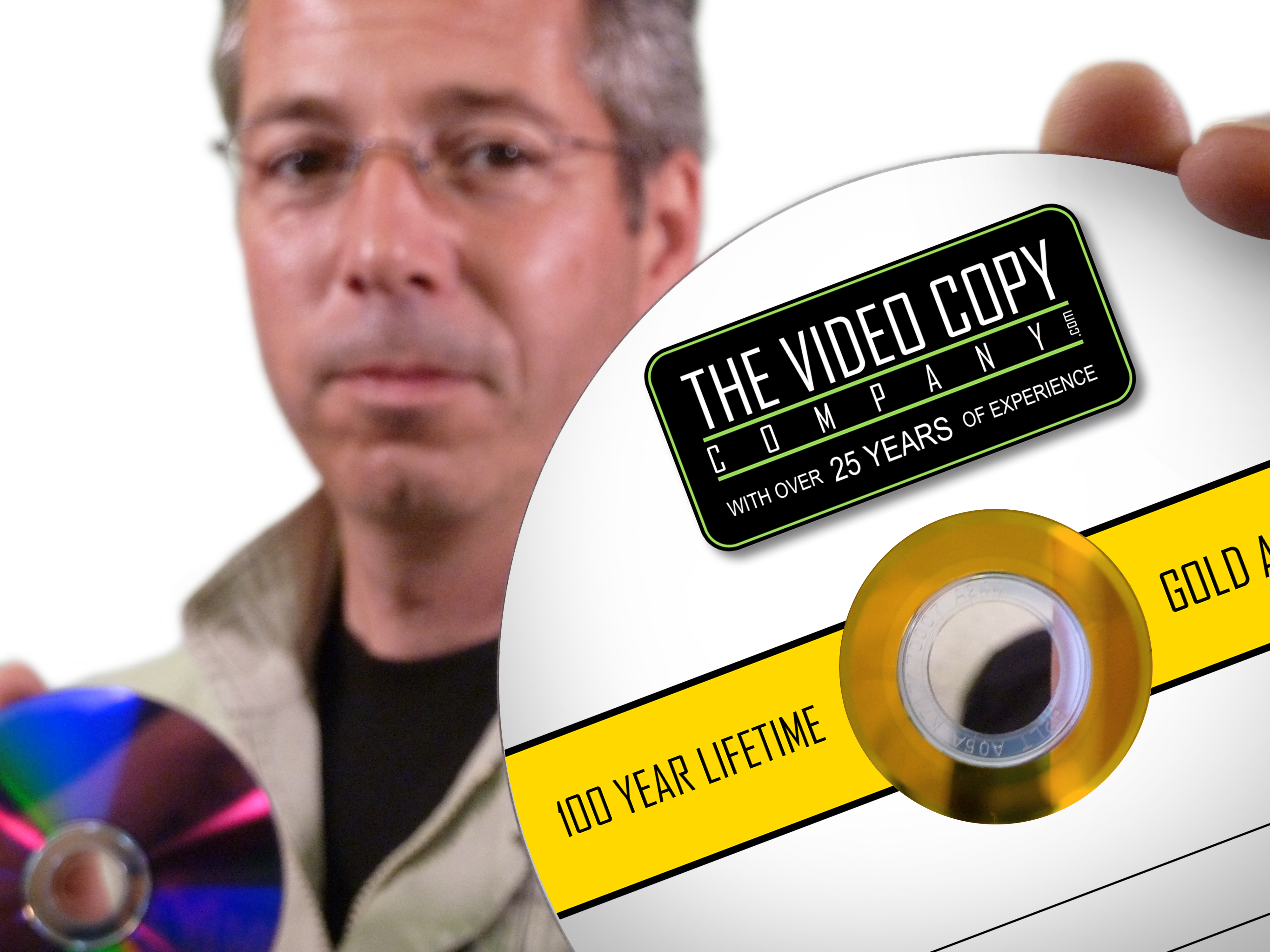Hints: Video Tapes to DVD
Scroll down for more
Bulky video tapes can be cut down to size by being transferred to DVD. Video tapes can degrade in quality over the years, so copying them to DVD, especially Gold Archive DVD, can put a stop to that.
This is most common type of conversion that we do here at The Video Copy Company.
A video to DVD transfer involves running the video tape through one of our industrial video players and into a machine which will convert the video from, in most cases, an analogue signal and into a digital one, burning it onto a DVD-R disc.
As standard, we offer two different types of DVD; Standard DVD-R and Gold Archive DVD-R.
DVD-R was introduced in 1997 by Pioneer and is supported by most DVD players (there is another format called DVD+R which is supported by fewer DVD players. It is important you know which format your DVD player prefers as we cannot be held responsible for converting to the wrong format). We can convert to DVD+R but you must let us know you require this format before we do the conversion.
The types of DVD you can make yourself as “one-offs” are usually referred to as “burnt” DVDs. There is an alternative called “replicated” DVDs but this is usually done in massive quantities.
The way a “burnt” DVD is made is by having a laser burn the digital signal in to the underside of the disc. This surface is made up of an organic dye which reacts to the laser, visibly changing colour. If you turn a burnt disc upside down, you will notice from the centre outwards, the purple colour is a shade or two darker.
 DVD-R was supposed to last forever, but it was later discovered that this was not the case. The data burnt into the organic dye of a Standard DVD-R can last between 2-10 years. Sometimes more, sometimes less. At The Video Copy Company, we only use A-grade discs, so our recordings should last 10 years or more.
DVD-R was supposed to last forever, but it was later discovered that this was not the case. The data burnt into the organic dye of a Standard DVD-R can last between 2-10 years. Sometimes more, sometimes less. At The Video Copy Company, we only use A-grade discs, so our recordings should last 10 years or more.
Upon discovering this, Gold Archive DVD-R was then developed, which uses layers of real gold and silver to lock the burnt information in the organic dye, which is held in place for up to 100 years. You can find out more in-depth information about the differences between Standard and Gold Archive DVD-Rs here…
Though the picture quality, audio quality and storage size are all the same, and both discs can be physically damaged with scratches and finger prints, a well stored Gold Archive DVD-R should last for generations.
If you already have standard DVDs which are deteriorated to a point that they are not playable, it may be possible for us to recover some or all of the data. Though this is never a guarantee as disc rot can range from moderate to severe, any data we do recover can then be transferred to a Gold Archive DVD for future posterity.
